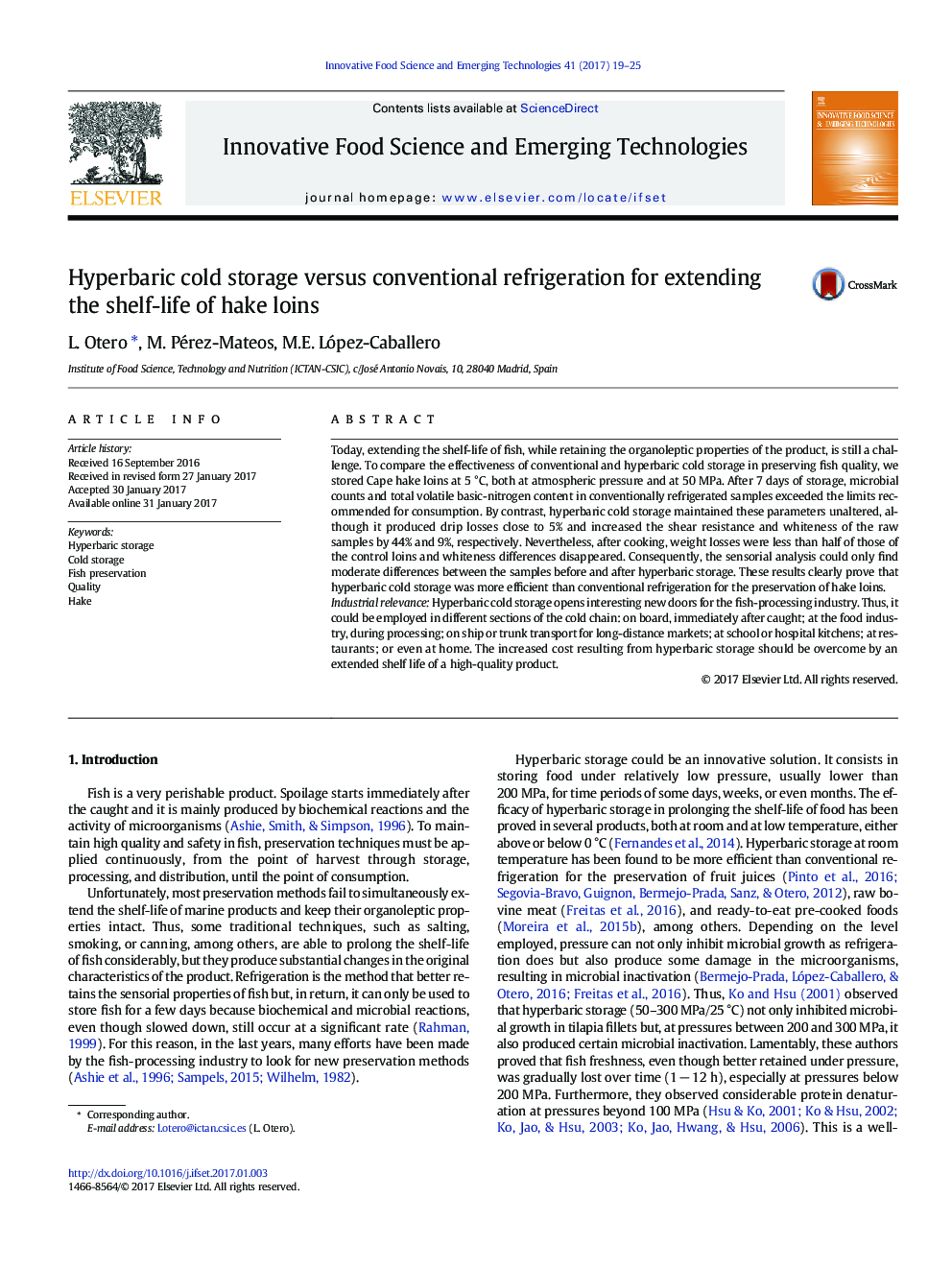| Article ID | Journal | Published Year | Pages | File Type |
|---|---|---|---|---|
| 5521741 | Innovative Food Science & Emerging Technologies | 2017 | 7 Pages |
â¢Hake loins were stored at 5 °C, both at atmospheric pressure and at 50 MPa, for 7 days.â¢Conventional refrigeration failed to extend the shelf-life of hake loins for 7 days.â¢Microbial counts and TVB-N content did not increase during hyperbaric cold storage.â¢Hyperbaric storage increased shear resistance and whiteness by 44% and 9%, respectively.â¢In cooked samples, sensorial differences before and after hyperbaric storage were moderate.
Today, extending the shelf-life of fish, while retaining the organoleptic properties of the product, is still a challenge. To compare the effectiveness of conventional and hyperbaric cold storage in preserving fish quality, we stored Cape hake loins at 5 °C, both at atmospheric pressure and at 50 MPa. After 7 days of storage, microbial counts and total volatile basic-nitrogen content in conventionally refrigerated samples exceeded the limits recommended for consumption. By contrast, hyperbaric cold storage maintained these parameters unaltered, although it produced drip losses close to 5% and increased the shear resistance and whiteness of the raw samples by 44% and 9%, respectively. Nevertheless, after cooking, weight losses were less than half of those of the control loins and whiteness differences disappeared. Consequently, the sensorial analysis could only find moderate differences between the samples before and after hyperbaric storage. These results clearly prove that hyperbaric cold storage was more efficient than conventional refrigeration for the preservation of hake loins.Industrial relevanceHyperbaric cold storage opens interesting new doors for the fish-processing industry. Thus, it could be employed in different sections of the cold chain: on board, immediately after caught; at the food industry, during processing; on ship or trunk transport for long-distance markets; at school or hospital kitchens; at restaurants; or even at home. The increased cost resulting from hyperbaric storage should be overcome by an extended shelf life of a high-quality product.
